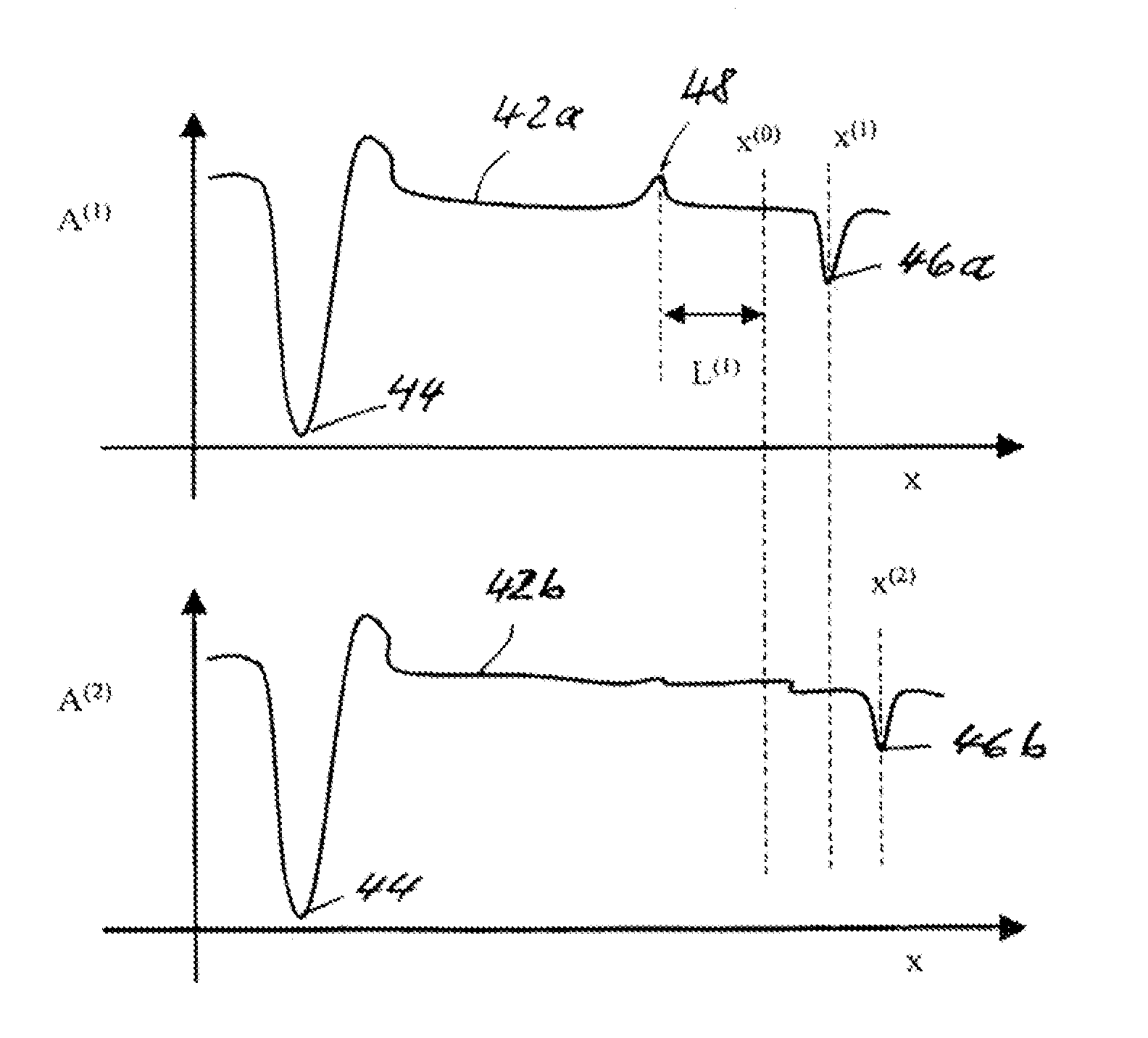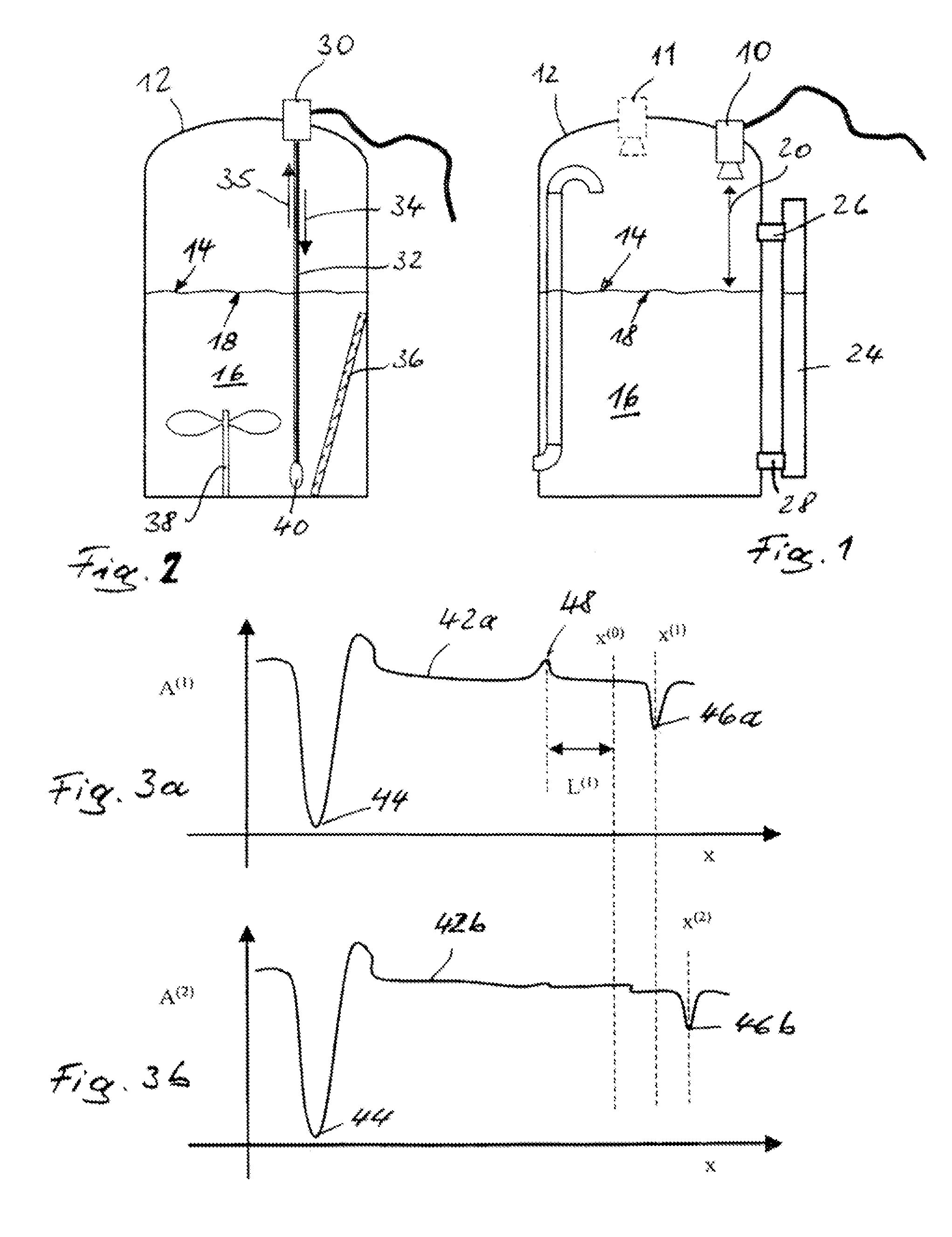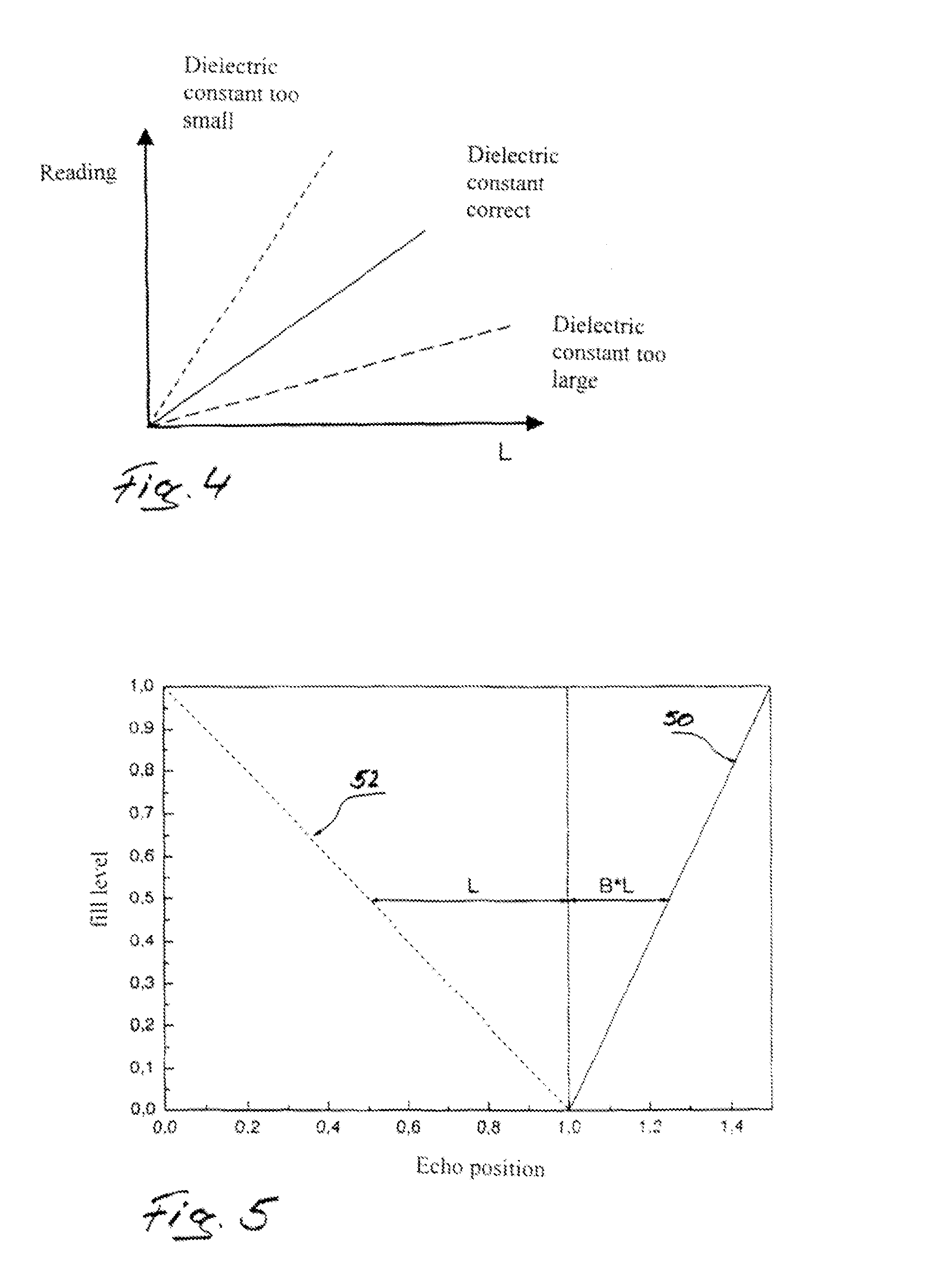Method for evaluating the measurement signals of a propagation-time based measurement device
a measurement signal and propagation-time technology, applied in the direction of engine lubrication, liquid/fluent solid measurement, reradiation, etc., can solve the problems of undesired reflection, not always present, and the physical properties of the medium in the container can also change, so as to increase the accuracy and reliability of measurement
- Summary
- Abstract
- Description
- Claims
- Application Information
AI Technical Summary
Benefits of technology
Problems solved by technology
Method used
Image
Examples
Embodiment Construction
[0046]FIG. 1 shows schematically, and by way of example, a typical arrangement of a fill level measurement device 10 based on the use of radar, mounted on a container 12 and protruding into such. The radar fill level measurement device 10, which serves for determining the fill level 14 of a medium 16 present in the container 12, is electrically serviced over a cable, which is illustrated only schematically, and connected, for example, with a monitor (not shown). The radar fill level measurement device 10 transmits for this purpose, from the schematically indicated horn antenna, radar signals, preferably pulsed measurement signals, in the direction onto the medium 16. These signals are reflected on a surface 18 of the medium 16. This is indicated by the double arrow 20 in FIG. 1. The reflected measurement signals are received by the horn antenna and compared in the radar fill level measurement device 10 with the transmitted measurement signals. The time from the transmitting of a mea...
PUM
 Login to View More
Login to View More Abstract
Description
Claims
Application Information
 Login to View More
Login to View More - R&D
- Intellectual Property
- Life Sciences
- Materials
- Tech Scout
- Unparalleled Data Quality
- Higher Quality Content
- 60% Fewer Hallucinations
Browse by: Latest US Patents, China's latest patents, Technical Efficacy Thesaurus, Application Domain, Technology Topic, Popular Technical Reports.
© 2025 PatSnap. All rights reserved.Legal|Privacy policy|Modern Slavery Act Transparency Statement|Sitemap|About US| Contact US: help@patsnap.com



